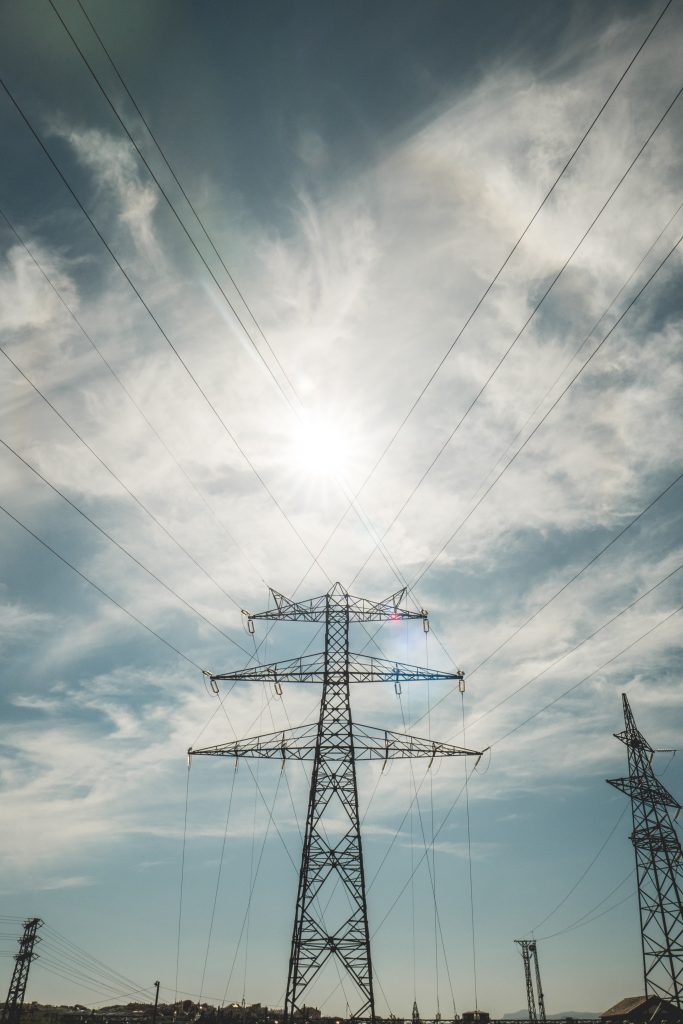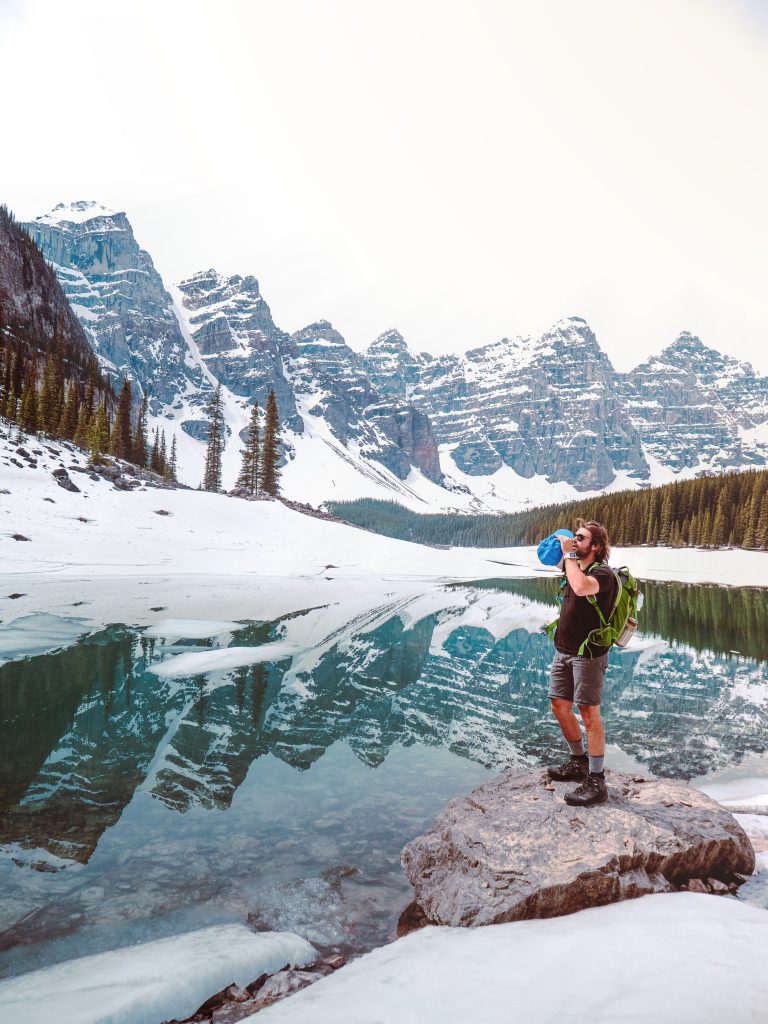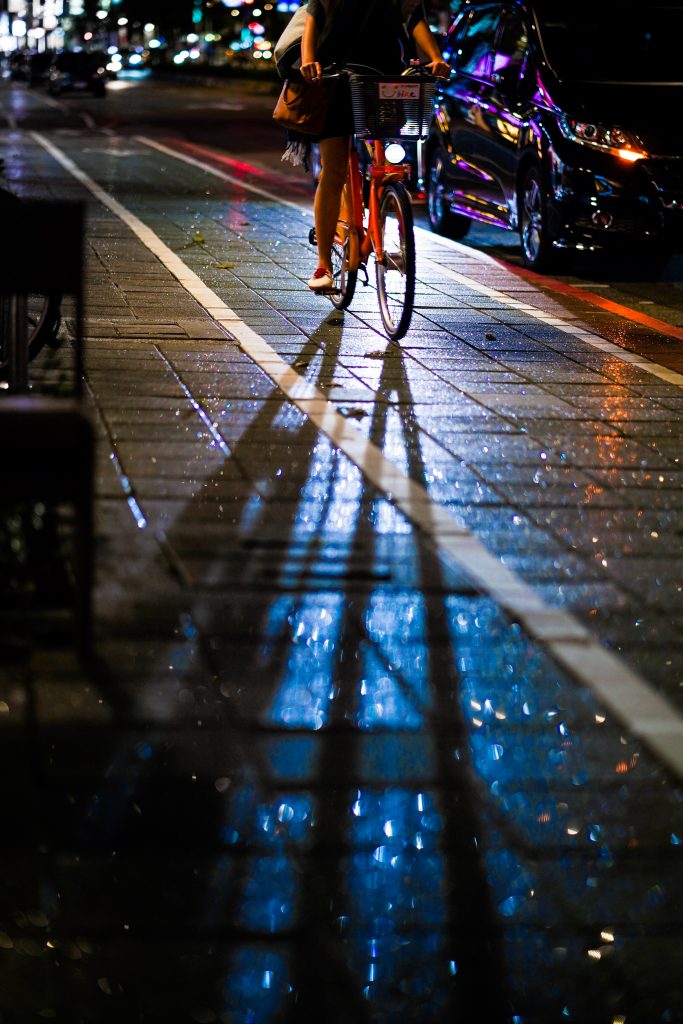There are hundreds of different DIY passive solar air collector plans floating around, but I’m focusing on a few that incorporate recycled aluminum pop, beer or juice cans as the “solar absorber“.
These DIY pop can solar panels are inspired by Cansolair – a commercially-produced product invented by a man from Newfoundland, Canada.
What’s Passive Solar Heating?
Passive solar air heating is considered the most cost-effective renewable energy – utilizing the energy from the sun by capturing it with an absorbing medium. There are plenty of online sites dedicated to passive solar applications, but you can get the basics via Wikipedia.
Passive solar heating intrigues me. It’s the only “free” heating source that I can think of. If it worked at night, it would be perfect.
 Crowd Sourcing a Design
Crowd Sourcing a Design
I intend to build one of these at some point and my research has turned up several designs and methods of construction – from very well executed to the afternoon “garage experiment”.
After spending several hours sorting through many pages of Google results, I’ve narrowed it down to a selection of results that’s representative of the designs, methods and materials DIYers are experimenting with – from good to bad.
A couple of these show up repeatedly in just about any Google search related to pop or beer can heaters (the Red Garage Project for example). I’ve included what I feel are the best designs that merit a look and some interesting ideas that you could adapt for your own purposes.
I know mine will incorporate the best ideas taken from the designs highlighted below.
Here’s what’s out there
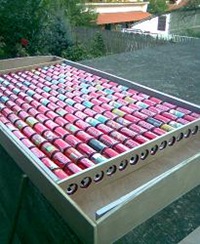 1. Solar Panel out of Aluminum Cans (by Malden P)
1. Solar Panel out of Aluminum Cans (by Malden P)
This design most closely resembles the commercial product sold by Cansolair. The site has very good pictures and step by step details to build a full-size passive solar heater.
Rating: Excellent Design. Definitely worth a look
2. Beer Can Solar Heater (by bornonazero)
This is a similar (and very well executed) design originally presented as a pictures-only You Tube video. There’s also an updated video with a bit of descriptive narration added.
Rating: Definitely worth a look.
3. Greg’s Pop-Can Solar Space Heating Collector (Greg West)
This design on “Build it Solar” is excellent. The PDF download is very detailed with good pictures. It features aluminum plenums in a box made of polyiso rigid insulation and has a flat face of Twinwall polycarbonate glazing. Lot’s of good ideas in this one.
Rating: Well worth the download (3MB PDF).
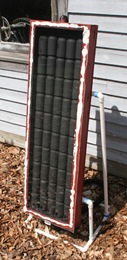 4. The Ubiquitous Red Garage Project (Hemmings Blog)
4. The Ubiquitous Red Garage Project (Hemmings Blog)
This version pops up in a lot of searches which is really frustrating because it’s not a good design and it probably turns more people off the idea than it inspires. I have no idea why so many sites linked to it or posted about it.
The design has efficiency deficiencies like no plenums – meaning the air doesn’t pass through the cans – which is kinda the point, and what produces most of the heat.
On the plus side, he built a second, larger version and I have togive him props for recycling a patio door for the glazing.
Rating: Take a pass or give it a quick scan and move on.
5. Colorado Wind Power
This one is a bit crude in the approach, but it would be fast and easy to do. However, I’m not so keen on the idea of superheating Styrofoam and pumping the resulting off gasses into my home.
 The best takeaway from this one is two unique methods to make the holes in the can bottoms:
The best takeaway from this one is two unique methods to make the holes in the can bottoms:
• using a blow torch (which would be pretty much instant)
• using a belt sander, which takes out the full bottom cleanly.
If you needed to MacGyver one of these in an emergency, then this would get you there. If you’re going for a longer-term installation, keep looking.
Rating: Have a quick look just to say you did.
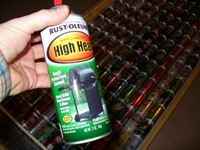 6. Brian’s Pop Can Solar Heater
6. Brian’s Pop Can Solar Heater
This one is kind of in the middle of the pack – the functional design looks to be sound, but it loses points on the fit and finish.
If I’m going to invest the time and energy in building one of these, I want it to look good and be reasonably sure it will stand up to the extreme conditions it will be subjected to.
Brian does provide some performance data that shows what kind of results you could expect (in Alabama).
Rating: Look it over for ideas to use.
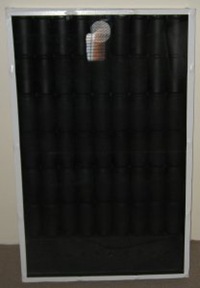 7. Moonshine Solar
7. Moonshine Solar
These small-scale window units are a little different and I’m really drawn to them. The designer started with few randomly placed cans in a housing and has since revised the design twice, incorporating some of the conventions common to the more sophisticated designs.
I like the idea of having a portable “room heater” as opposed to – full-sized panel mounted on the side of the house for several reasons.
• Less cost to build
• No installation required
• Portability
My partner and I both work at home, but our offices are in different areas of the house – a couple of portable “space heaters” would be more likely to keep us comfortable than a single large one located in the only practical location, which is a long way from my office.
Rating: Definitely worth a look [Update: It seems the website for Moonshine Solar has been taken down since I was doing my research. Still, an idea that’s worth consideration.]
Wrap up
Passive solar heaters make sense and are an excellent DIY project that should pay for itself in a year or two. There are a lot of good ideas in examples above but the main points to consider carefully would be:
- High internal Heat – use components that will stand up to repeated extreme temperature swings.
- Insulation – avoid or cover Styrofoam insulation that could give off gas or degrade due to UV exposure.
- Location – maximum southern exposure during the warmest part of the day
The pop can heater is just one of many types of passive solar heating installations. I’ll explore other designs in the coming months.
[source]
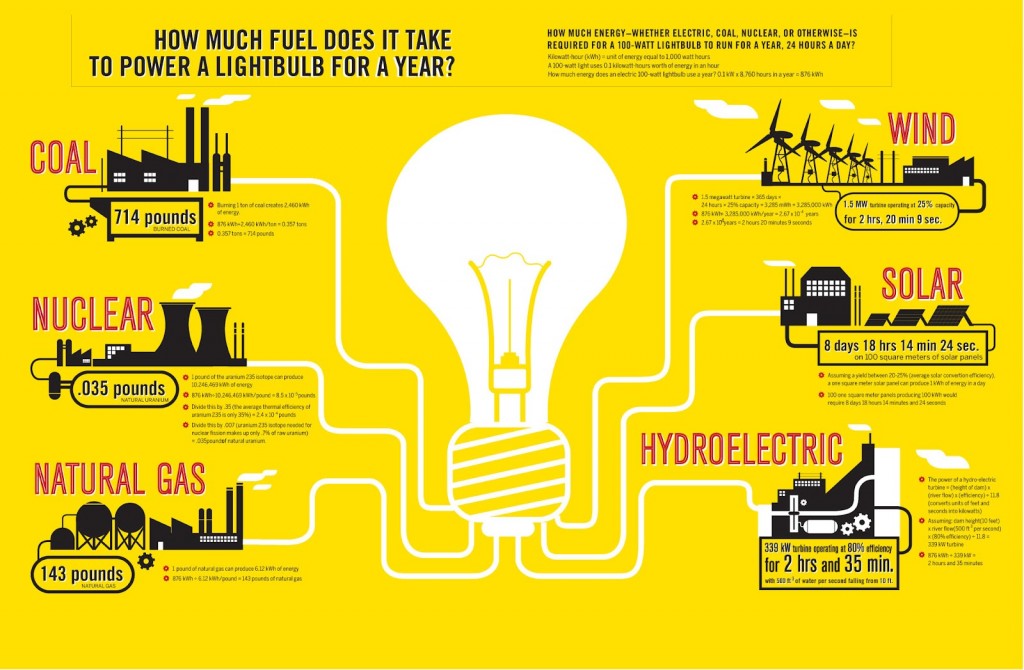

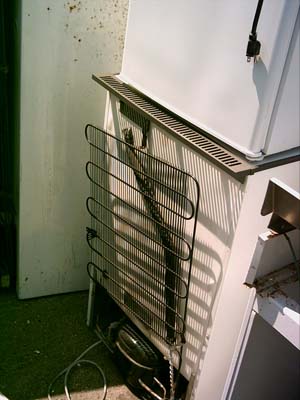
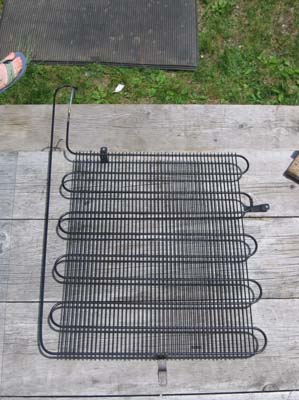

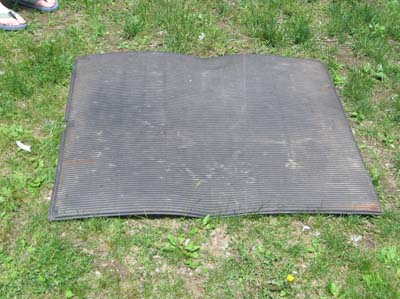

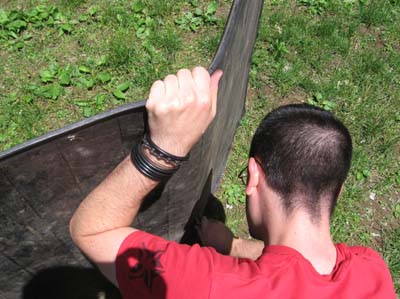
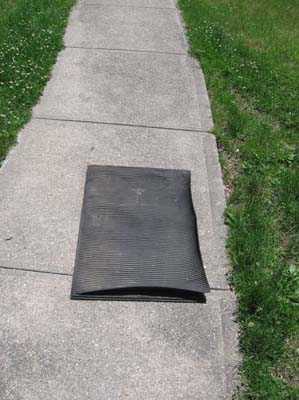
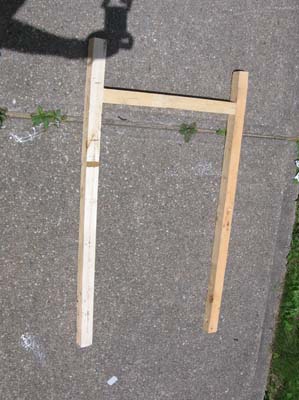
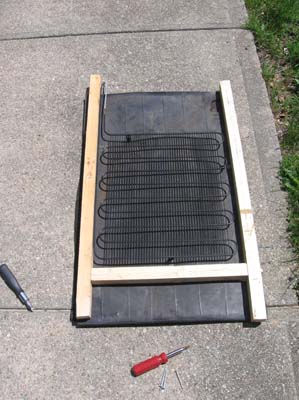
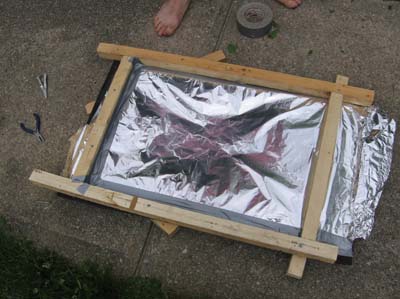
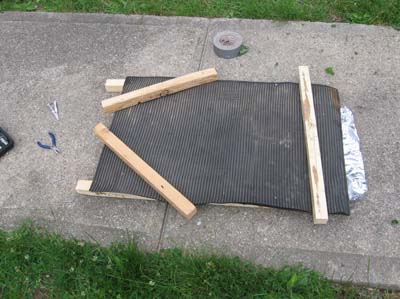
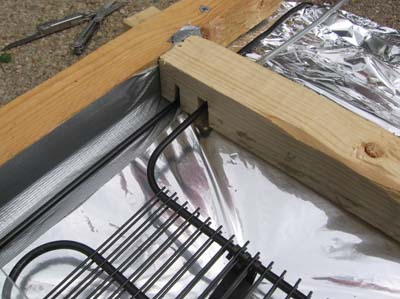
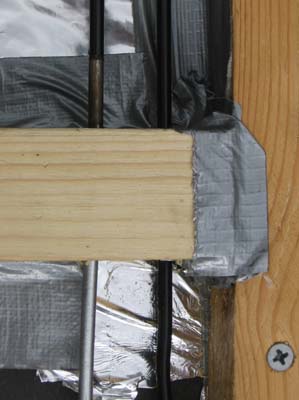


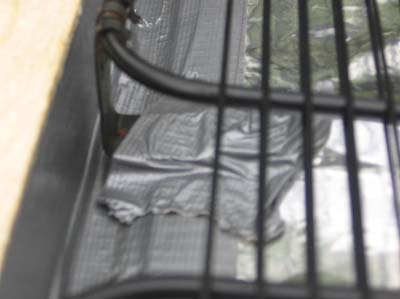
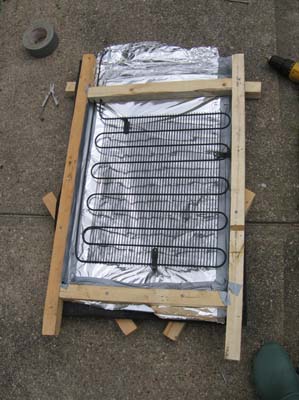
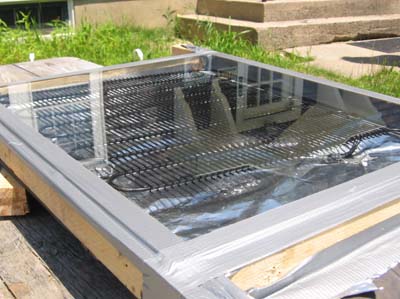
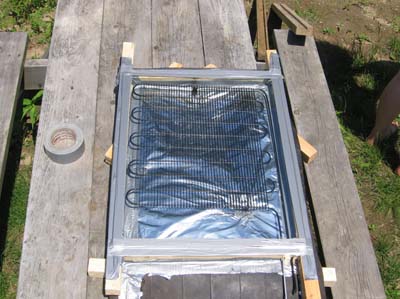





 6.
6.  7. Moonshine Solar
7. Moonshine Solar